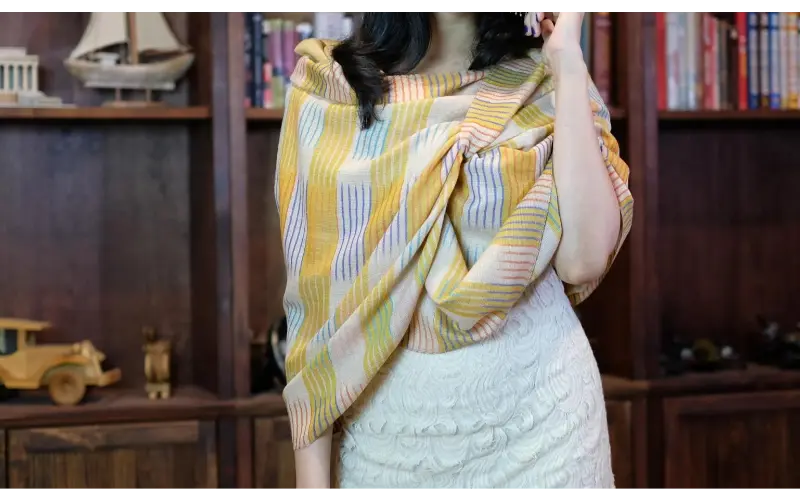Pashmina, renowned for its softness and warmth, has been cherished for centuries. However, distinguishing genuine Pashmina from imitations is essential in a market filled with replicas. This guide explains how.

Key Indicators for Recognising Authentic Pashmina
Here are a few tips to help you tell the difference between real and fake Pashmina:
- How it Feels: Real Pashmina stands out for its great softness. It must feel super soft and practically feather-light. When you run your hand over it smoothly, you may be handling a pure Pashmina shawl.
- Warmness Test: Pashmina is known for its unique warmth, despite being light. Press the shawl to your skin. It should give immediate, cosy warmness, a trademark of only the real Pashmina.
- Observing Pilling: Pure Pashmina shawl fibres are extremely thin, leading to less pilling. If you find small lumps on the surface, it may hint at mixing with other stuff. Still, True Pashmina keeps its flawless texture, showing limited pilling.
- Transparency Test: If Pashmina is authentic then it’s somewhat see-through when under light. Its thin and delicate strands are the reason behind it. Pashmina that aren’t real are too thick or not see-through, hinting at mixed material or fake stuff.
- Burn Test: This isn’t for every Pashmina. Carefully, set a tiny piece on fire. Real Pashmina smells like burnt hair. It proves that the fibers used are natural. Be careful though, don’t do this one too much.
- Pricing Factors: Pure Pashmina shawl is premium and costs much more. It requires a lot of work and it is a labor-intensive product. If it’s cheap, it’s not real. A high price equals a real deal because making wool takes a lot of effort.
- Detailing Craftmanship: The true value of Pashmina is in its craftsmanship. The real deal is handmade with extra details, proof of artisan skill. Look for flaws that are common in handmade goods – they show their authenticity.
- Origin and Labelling: Look for labels showing the Pashmina’s source. Real Pashmina usually comes from areas like Kashmir or Nepal. These places value the traditional craft. A real label gives you peace of mind about the fabric’s authenticity.
- Specific Selling: Only buy from known sellers and artisans who focus on Pashmina. Reliable and established sources will give you the right information about the fabric’s origin and whether it’s real.
To find out if it’s a pure Pashmina shawl, you have to see and touch it. Watch for who made something and where it is from. These steps will help you make sure that your Pashmina is a special thing, showing the hard work and old-timey ways used to create this lovely material.
Leave A Comment